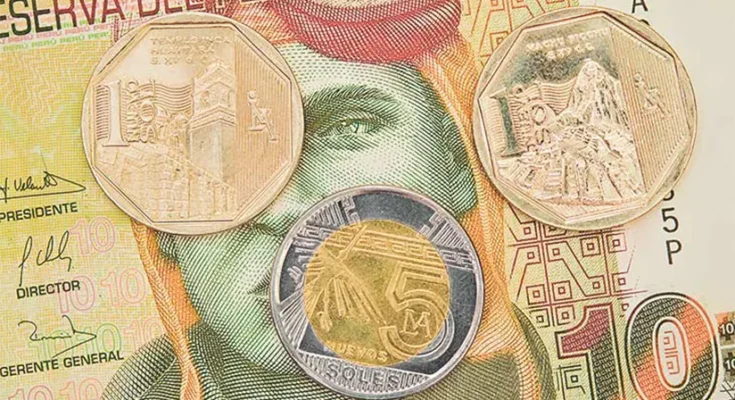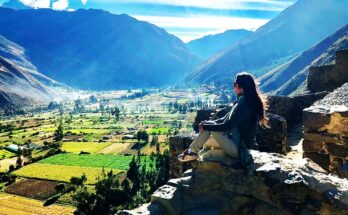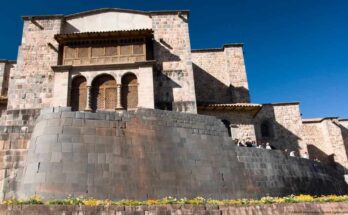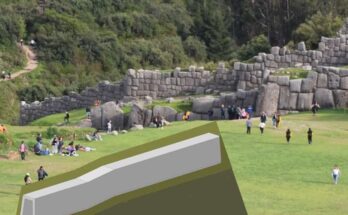When considering a trip to Peru, or simply wanting to know more about its economy, understanding the country’s currency is essential. In this blog, you’ll discover everything about Peru’s currency: from its history to its current use, along with useful tips for travelers.
What is the Currency of Peru?
The official currency in Lima and throughout Peru is the “sol” (PEN). This name originates from the “sol de oro,” which was used during the colonial period. Although the currency has undergone various transformations, the current sol has been the official currency since 1991. Prior to this, the “inti” was the national currency; however, due to inflation, it was replaced by the new sol, which was simply called “sol” in 2015.
The adoption of the sol marked the beginning of an era of economic stability in the country. Over the years, the currency has seen various designs, featuring cultural, historical, and natural aspects of Peru.
Denominations of the Sol: Banknotes and Coins in Peru
Currently, the sol is available in a variety of banknotes and coins:
Banknotes
The denominations include 10, 20, 50, 100, and 200 soles. Each banknote is adorned with significant historical figures such as Túpac Amaru II, Abraham Valdelomar, and María Rostworowski, as well as iconic landscapes and archaeological sites.
Coins
The circulating coins in Peru include 10, 20, and 50 céntimos, as well as 1, 2, and 5 soles. These coins also bear cultural and natural symbols, such as the vicuña and the potato.
Commemorative Coins in Peru
In addition to the regular currency, Peru issues commemorative coins celebrating historical events, important figures, and cultural heritage. These coins are highly valued by collectors and can serve as excellent souvenirs for visitors.
How is the Currency Used in Daily Life?
The sol is widely utilized throughout Peru, and although the country is becoming increasingly digital in terms of payments, cash remains the preferred payment method in local markets, public transportation, and small shops. It’s common for low-denomination banknotes and coins to be used for smaller purchases, while higher-value banknotes are more frequent in larger transactions or more formal commercial establishments.
Where to Exchange Money in Peru
Exchanging money in Peru is quite straightforward, especially in tourist areas and city centers, where you will find numerous currency exchange houses. However, avoid exchanging money on the street, as handling cash in crowded places can be unsafe.
You can also use ATMs to withdraw money, as most offer both U.S. dollars and soles. Keep in mind that the exchange rate may vary and that international banks often charge a fee for each transaction.
Extra Tip
Currency exchange houses accept various currencies, but if you are traveling with British pounds, make sure to exchange them in Lima; it can be challenging to find places to do so elsewhere.
Tips for Using Currency in Peru
If you’re planning to visit Peru, here are some useful tips:
Currency Exchange
It is advisable to exchange money at authorized currency exchange houses or banks to avoid issues with counterfeit bills. Airports also provide currency exchange services, but usually at a less favorable rate.
ATMs
Available in almost all cities, ATMs allow you to withdraw soles directly from your bank account in Peru. However, be mindful of the fees your bank may charge.
Credit/Debit Cards
Most tourist establishments, hotels, and restaurants accept credit and debit cards, but it’s always helpful to carry some cash, especially in rural areas.
Dealing with Worn-out Money
When planning your trip to Peru, it’s crucial to understand that many places do not accept banknotes that are in poor condition. Therefore, it is advisable to avoid accepting worn, damaged, or taped banknotes to prevent issues when making payments.
U.S. dollars in poor condition are also not accepted in Peru. Merchants refuse to accept foreign bills that are dirty or damaged. For this reason, it’s best to carry bills in good condition, both in soles and in dollars. If you end up with damaged bills, you can exchange them for free at the Central Reserve Bank (BCR) or the National Bank in any city.
How to Handle Counterfeit Money in Peru
Whether you’re handling soles or dollars, it’s important to be vigilant against counterfeit bills in Peru, as they can closely resemble real ones. However, there are key differences in texture, colors, and design. Always verify the money you receive, whether from a store or a currency exchange.
Peruvian soles come in banknotes of 10, 20, 50, 100, and 200 soles, with the 200 soles being the least common and sometimes not accepted.
Identifying Counterfeit Bills
To identify a counterfeit bill, compare its texture with that of another authentic bill. Check details such as the watermark, hidden figures that only appear under backlight, and most importantly, the security band, which should change color depending on the light and angle. While counterfeit money is a common problem, it doesn’t mean it will happen to you. If you notice anything unusual, don’t hesitate to ask for a bill replacement.
The Currency of Peru and Digitalization
With the advancement of technology, Peru has begun adopting digital payment methods, such as electronic wallets and mobile applications. Although the Peruvian sol remains popular, more and more Peruvians and tourists are choosing to pay digitally, facilitating transactions in cities and tourist areas.
Tipping in Peru
While it is advisable to use credit cards for payments in Peru, it’s also useful to carry some cash for tips. Tipping is not as common a practice in Peru, so having local coins or banknotes can be convenient. It’s not always possible to add a tip to the bill, so keep this in mind. Typically, leaving around 10% of the service cost is customary.
Can You Pay with Credit Cards in Peru?
Yes, you can! Many places even allow you to pay in U.S. dollars or soles. Just be aware that additional fees may apply. When using your credit card, check the amount on the POS before confirming the purchase.
Extra Advice
It’s a good idea to keep a copy of your credit card in case of emergencies. For many travelers, using credit cards instead of cash is more convenient during international trips.
What About the Dollar in Peru?
The U.S. dollar is accepted in some parts of Peru, particularly in tourist areas and larger businesses. However, it is advisable to use soles to avoid confusion regarding the exchange rate. Many prices are expressed in soles, so paying in dollars can lead to an unfavorable exchange or the need to receive change in soles.
How Much Money Do You Need to Travel to Peru?
Here’s a breakdown of potential costs you might incur during your stay in Peru:
Transportation:
- Short city taxi ride: S/ 10 – S/ 20
- Urban bus: S/ 1 – S/ 3
- Interprovincial bus trip (e.g., Lima to Cusco): S/ 100 – S/ 200
- Flight (Lima to Cusco): S/ 200 – S/ 600
Accommodation:
- Hostel (per night): S/ 30 – S/ 70
- Budget hotel (per night): S/ 100 – S/ 200
- Mid-range hotel (per night): S/ 200 – S/ 400
- Luxury hotel (per night): S/ 500 – S/ 1000+
Meals:
- Menu of the day in a local restaurant: S/ 10 – S/ 20
- Dinner at a mid-range restaurant: S/ 50 – S/ 100 per person
- Dinner at a luxury restaurant: S/ 150 – S/ 300 per person
- Coffee or juice in a café: S/ 8 – S/ 15
- Bottle of water (1 liter): S/ 2 – S/ 5
Tourist Entry Fees and Activities:
- Entry to Machu Picchu (city only): S/ 152
- Entry to Machu Picchu + Huayna Picchu Mountain: S/ 200
- Guided tour to Machu Picchu (group): S/ 100 – S/ 150
- Cusco Tourist Ticket (16 archaeological sites): S/ 130
- Entry to Laguna Humantay (trek): S/ 10 – S/ 20
- Nazca Lines tour (flight): S/ 350 – S/ 500
Shopping and Souvenirs:
- Handicrafts (textiles, ceramics, etc.): S/ 30 – S/ 100
- Alpaca clothing (sweaters, scarves): S/ 100 – S/ 300
- Peruvian coffee (250g bag): S/ 15 – S/ 30
- Artisan chocolate (100g bar): S/ 10 – S/ 20
Tips:
- Restaurants: 10% of service cost
- Tour guides: S/ 20 – S/ 50 per day
- Hotel porters: S/ 5 – S/ 10 per bag
Frequently Asked Questions About Currency in Peru
What is the official currency of Peru?
The official currency of Peru is the Nuevo Sol (S/), commonly referred to simply as the “sol.”
Should I bring dollars or soles to Peru?
It is advisable to bring US dollars and exchange them for soles in Peru. Dollars are widely accepted and easy to exchange in most cities.
Are credit cards accepted in Peru?
Yes, credit cards are accepted in most shops, restaurants, and hotels in major cities. However, it’s useful to carry cash for small purchases and tips.
Is it safe to use ATMs in Peru?
Yes, it is safe, but it’s best to use ATMs located inside banks or shopping centers for added security. Always check that the ATM does not have any strange devices attached.
Can I pay in dollars in Peru?
Some tourist areas and hotels accept dollars, but the most common currency for transactions is soles. If you pay in dollars, you will receive change in soles.
What is the dollar-to-sol exchange rate?
The exchange rate fluctuates, generally ranging from S/ 3.5 to S/ 4 per dollar. Always check the updated exchange rate before exchanging money.
Should I tip in soles or dollars?
It is preferable to leave tips in soles. A tip of around 10% is customary in restaurants.
Can I use foreign debit cards in Peru?
Yes, you can use international debit cards at most ATMs and stores, as long as they are enabled for international transactions.
The Peruvian Currency: A Symbol of Identity
The currency of Peru, the sol, is not just a medium of exchange; it reflects the country’s rich history and culture. From its colorful banknotes to its symbolic coins, the sol is a pillar of daily life in Peru. Whether you’re planning a trip or simply want to learn more about this fascinating country, understanding its currency is an important step. Are you ready to explore Peru and its economy with soles in your pocket?
The Impact of the Peruvian Currency on the Economy
The use of the sol in Peru is relatively stable compared to other currencies in the region, contributing to the economic stability Peru has experienced over the last few decades. This stability has enabled the country to attract foreign investment and maintain sustained economic growth, which is reflected in the population’s confidence in their currency.
In conclusion, understanding the currency of Peru is crucial for any traveler planning to explore this beautiful country. From exchanging money to recognizing the importance of the sol in the daily life of Peruvians, this guide provides the essential information you need to navigate the monetary landscape of Peru with confidence. Enjoy your travels and embrace all the wonders Peru has to offer!



